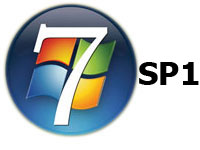 Sadly I don’t have a ‘Service level Agreement’ with anyone. The reason being my business model is so crazy diverse it’s nearly impossible to encompass. Quite literally I seem to support everything 24/7/365 and if I can’t support it I’ll find you someone that can. If nothing ever breaks in your office/company I consider that darn near perfect, I want all my clients to NOT have problems. I really don’t like the companies that thrive on IT misery by billing a fortune for constantly fixing ‘something’ but never any ‘smooth sailing’.
Sadly I don’t have a ‘Service level Agreement’ with anyone. The reason being my business model is so crazy diverse it’s nearly impossible to encompass. Quite literally I seem to support everything 24/7/365 and if I can’t support it I’ll find you someone that can. If nothing ever breaks in your office/company I consider that darn near perfect, I want all my clients to NOT have problems. I really don’t like the companies that thrive on IT misery by billing a fortune for constantly fixing ‘something’ but never any ‘smooth sailing’.
I know that sounds a little weird but IT infrastructure is now printers, cabling, servers (real & virtual), cloud, phones, watches, tablets, copiers, routers, WiFi, email, VPN, RDP and that doesn’t even cover security systems, cameras, cars (yup.. I’ve clients that get Email/Teams/Zoom in their car). A few of my 3 & 4 letter agency clients have me doing towers, encryption, forensics and the occasional ‘white hack’. I can’t fix your fridge remotely but if it needs to connect to the internet to order your milk for the morning coffee, that’s part of my job if you say it is.
Thus.. I will pretty much do anything and everything to the best of my ability as soon as I possibly can or find you someone that will/can. All this for $100/hour (honestly I really need to revisit my rates.. it hasn’t change in nearly 10 years when gas was $0.80/liter) plus one-way travel time (no mileage) if I’m not already planning on being in your area.
How’s that for a ‘Service Agreement’?

 Alas Microsoft is in the process of ending the 2008R2 server and Exchange 2010 from regular support and updates (limited support until 2020 but only critical security patches). This means all those companies that have one of these awesome beasties will need an upgrade in 2017 or 2018 (or risk some serious problems).
Alas Microsoft is in the process of ending the 2008R2 server and Exchange 2010 from regular support and updates (limited support until 2020 but only critical security patches). This means all those companies that have one of these awesome beasties will need an upgrade in 2017 or 2018 (or risk some serious problems). Microsoft has a bounty program, which pays if you find a bug and explain why it’s a bug (or exploit). They pay upto $50,000 USD for the information. Yang Yu, founder of Tencent’s Xuanwu Lab has made previous successful bounty claims as well but this one is a whopper. It affects every version of Windows back to Windows 95 (no patches coming for those old OS either).
Microsoft has a bounty program, which pays if you find a bug and explain why it’s a bug (or exploit). They pay upto $50,000 USD for the information. Yang Yu, founder of Tencent’s Xuanwu Lab has made previous successful bounty claims as well but this one is a whopper. It affects every version of Windows back to Windows 95 (no patches coming for those old OS either). On June 27th 2012 Microsoft accidentally put Skype into thier ‘Important’ updates for the WSUS. What happened was that millions of users got Skype installed on thier desktop without consent and let’s face.. not really needing it.
On June 27th 2012 Microsoft accidentally put Skype into thier ‘Important’ updates for the WSUS. What happened was that millions of users got Skype installed on thier desktop without consent and let’s face.. not really needing it. For a couple of months Apple has been aware of some malware called ‘Mac Flashback’ and a resounding failure to do anything about it has cause and estimated (so far) 600,000 viral infections on Mac. Thus the arguement finally ends, and rest assured this isn’t the first virus it’s just the first that cannot be swept under the rug.
For a couple of months Apple has been aware of some malware called ‘Mac Flashback’ and a resounding failure to do anything about it has cause and estimated (so far) 600,000 viral infections on Mac. Thus the arguement finally ends, and rest assured this isn’t the first virus it’s just the first that cannot be swept under the rug. The web server (and backup mail) is moving from the old DDS (fractional dedicated server) to a newer ‘virutal’ server located in the ‘cloud’. The advantages are it’s a little more reliable but mostly it cleans up years of alterations and upgrades and it’s far more expandable.
The web server (and backup mail) is moving from the old DDS (fractional dedicated server) to a newer ‘virutal’ server located in the ‘cloud’. The advantages are it’s a little more reliable but mostly it cleans up years of alterations and upgrades and it’s far more expandable. Microsoft released the first official service pack for Windows 7 today. This is an important update that includes previously released security, performance, and stability updates for Windows 7. SP1 also includes new improvements to features and services in Windows 7, such as improved reliability when connecting to HDMI audio devices, printing using the XPS Viewer, and restoring previous folders in Windows Explorer after restarting.
Microsoft released the first official service pack for Windows 7 today. This is an important update that includes previously released security, performance, and stability updates for Windows 7. SP1 also includes new improvements to features and services in Windows 7, such as improved reliability when connecting to HDMI audio devices, printing using the XPS Viewer, and restoring previous folders in Windows Explorer after restarting.